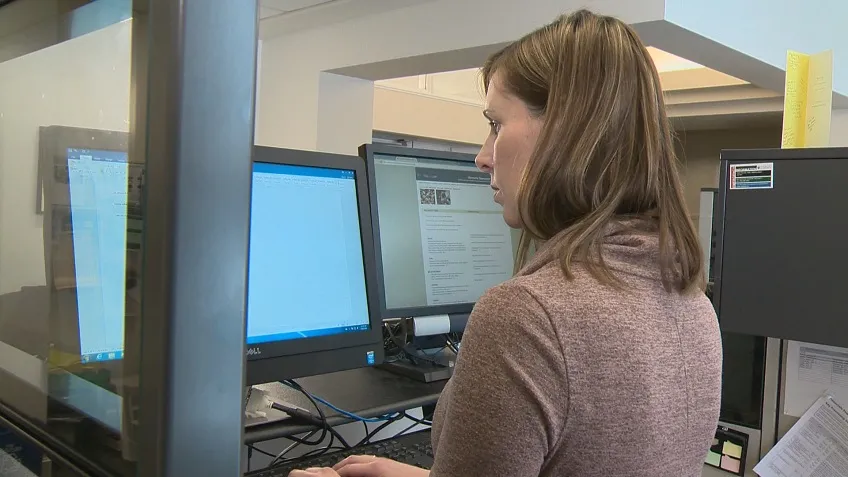News
Can your standing desk raise health risks? A new study says you can go too far
The term “sitting is the new smoking” has been cautioning office-workers against being sedentary in recent years, but a new study suggests that some may be swinging too far in the other direction.

Standing desks have risen in popularity, with the global market valued at USD $7.75 billion, but new research warns against relying too much on them.
The study, led by the University of Sydney and published in the International Journal of Epidemiology, studied 83, 013 adults in the United Kingdom to assess daily time spent sitting and standing. The study found that being on your feet for more than two hours a day can cause problems such as varicose veins, but does little to reduce the risk of cardiovascular disease that comes with prolonged sitting.
Patricia Doyle-Baker, from the faculty of kinesiology at the University of Calgary, said, “Anybody who stands for a long period of time in a very still position is going to have some issues associated with either muscular-skeletal system or they’ll have blood pooling in their legs and in their feet.”
However, Doyle-Baker said that what the study points out is not that standing desks are inherently bad for your health, but that holding any position for prolonged periods of time can be bad — whether it’s sitting or standing.
Scott Lear, professor of health sciences at Simon Fraser University, said, “It’s not just sitting. It’s sedentary behaviour that is problematic — not moving.”
He said, “It’s a different posture than sitting. But as this study showed, it comes also with its own risks for heart disease and other things like varicose veins.”
Doyle-Baker said, “This article is not saying don’t necessarily not stand at your desk, but think about the prolonged amount of time standing at your desk.”
Lear said standing users should be wary of blood pooling in their feet or legs.
“If it cools and it’s not moving, some of the blood cells can cleave together and create these little clots,” he said. “What happens when the blood moves up from our feet and our lower legs? It goes to our heart and passes through the inner chambers of the heart and then goes to our lungs. And so that little clot will keep going merrily along until it gets to a blood vessel that’s too narrow.”
This, he said, can cause a pulmonary embolism for some people.
So should you throw your standing desk away? Not quite. Sitting for prolonged periods is still quite bad for you.
“Sitting for extended, continuous periods can increase your chances for diabetes, heart disease, some cancers and a whole bunch of other diseases,” Lear said.
So if, sitting and standing can both cause health issues, what solution is there for the health conscious office worker? The answer, some experts say, may lie in height-adjustable sit-and-stand desks.
A 2020 paper published by the Centre of Research Expertise for the Prevention of Musculoskeletal Disorders (CRE-MSD) at the University of Waterloo said sit-stand workstations can help alleviate pain issues for some users. People suffering from conditions such as herniated disks in their spines could benefit from sit-stand desks.
“Sit-Stand workstations can be effective for some individuals in relieving musculoskeletal discomfort, in particular low back pain,” the paper said.
The paper recommends office users employ a 1:1 ration, which means in an eight-hour work day, you should ideally be sitting for four hours and standing for four hours. But it depends on how you split your time.
Jack Callaghan, one of the co-authors of the University of Waterloo paper, said, “Our gold standard, if people can do it, is you shouldn’t sit longer than 30 minutes without doing something else. And you should never stand longer than 15 minutes continuously.”

Doyle-Baker said some people could benefit from something called the “20-eight-two rule”.
“You sit for 20 minutes, you stand for eight minutes and you move for two minutes,” she said.
If you don’t have a standing desk or a height-adjustable standing desk but don’t want to spend the money, Lear said there are things you could incorporate in your day to make sure your body is in movement every 20 to 30 minutes.
“If you’re working at home, it could be going upstairs, doing the laundry or just walking around,” he said.
If you’re at the office, small things like taking regular breaks to the coffee machine or water cooler could help.
“I like to encourage people setting their phone alarm or something, where after half an hour it goes off. You can have the watches that will buzz if you’re not moving around,” he said. “Our joints like movement and our joints get lubricated when they move.”
Callaghan said the most sedentary hours often come not during work, but after work.
“(Sometimes) it’s not what you’re doing at work. It’s what you’re doing outside work, whether you’re spending an hour in the car, spending four hours on the couch,” he said.
Callaghan recommended ditching your car for active transportation, such as public transit or bicycles, every once in a while, if possible.
For your home office, Doyle-Baker said a sit-stand desk might be a good idea.
“I think anyone can benefit from a sit-to-stand situation,” she said. “I think standing desks are here to stay.”
Our Recent News




